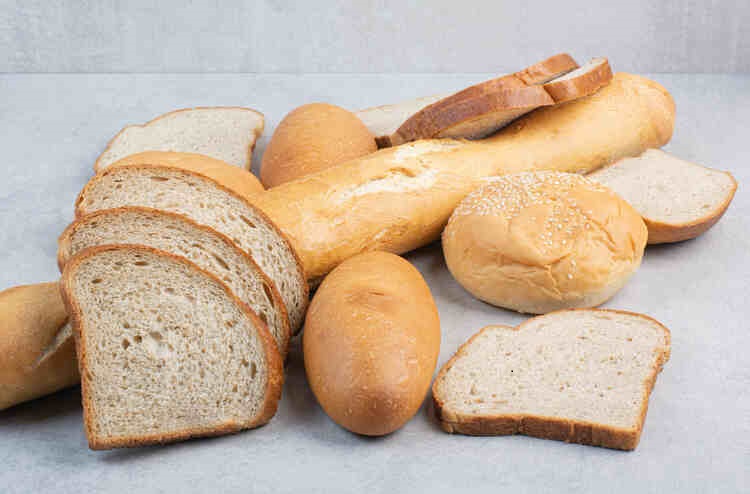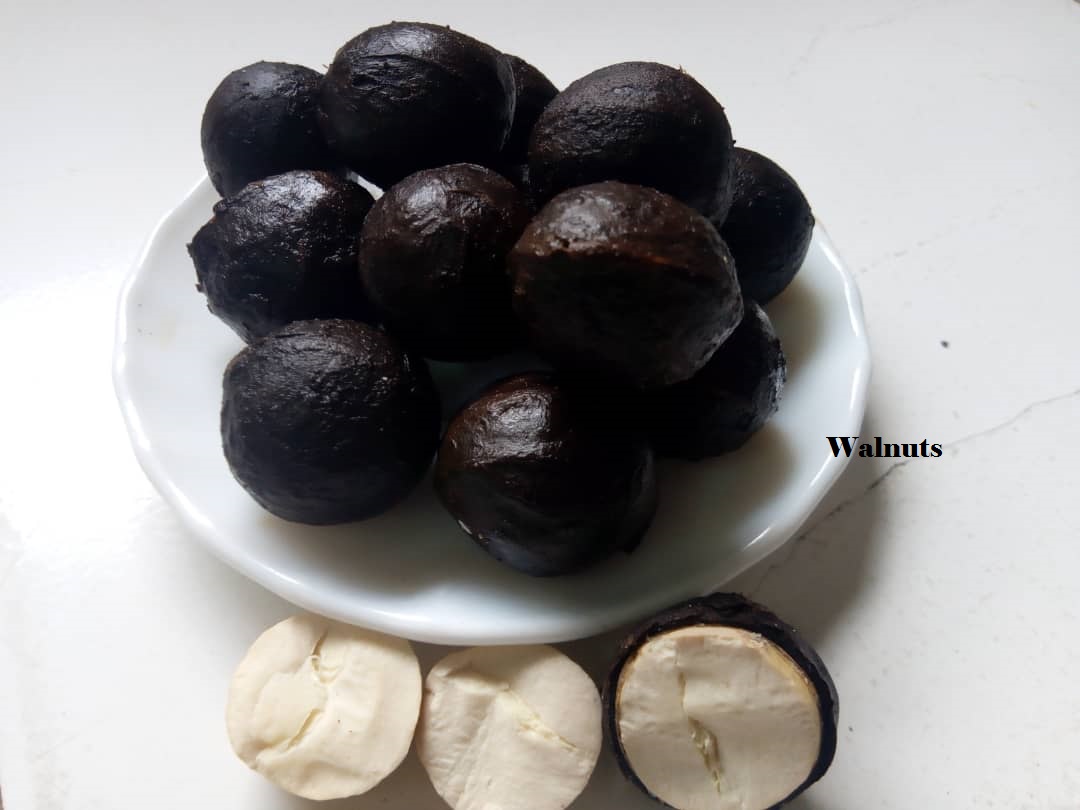
Healthy Bread Options To Buy: A Nutrient-Rich Guide for Health-Aware Customers
Bread has grown well beyond the modest loaf of white bread, which is a staple in many of our diets.
For generations, bread has been a staple of the human diet. However, not all bread is created equal, and picking the right kind of bread can have a big impact on your overall health.
Basically, there is an increasing need for healthier bread options as the emphasis on health and nutrition grows.
This guide is designed to help you navigate the world of healthy bread options, whether you’re watching your weight, managing dietary restrictions, or simply striving for a more healthier lifestyle.
We’ll explore different types of healthy bread, their benefits, and provide answers to some frequently asked questions.
Is Bread A Healthy Option?
Wholemeal bread in particular is a healthy option and is a great source of dietary fiber, which helps maintain a healthy digestive tract, lowers cholesterol and blood sugar levels and keeps you fuller for a long time.
Why Does Your Choice of Bread Matter?
You might be wondering, why does it matter what kind of bread I eat? Well, the type of bread you consume can have a significant impact on your health and well-being. Here’s why it’s essential to make the right choice:
Nutritional Value
Healthy bread options provide essential nutrients like fiber, vitamins, and minerals that can contribute to a balanced diet.
Digestibility
Some bread types are easier to digest, making them suitable for individuals with sensitive stomachs.
Weight Management
Choosing healthier bread can help you manage your weight as it often contains fewer calories and less sugar.
Blood Sugar Control
Low glycemic index bread options can help stabilize blood sugar levels, making them an excellent choice for individuals with diabetes.
Dietary Restrictions
Healthy bread options cater to various dietary preferences, including gluten-free, vegan, and more.
The Healthiest Types of Bread and Their Health Benefits – Healthy Bread Options
Here are some of the healthiest bread options available for your consideration.
1. Whole Grain Bread
Whole-grain bread is a fantastic choice for those looking to add more fiber and nutrients to their diet. Unlike white bread, which is made from refined flour, whole grain bread is crafted using the entire grain (wheat flour), including the bran, germ, and endosperm.
This means you get the full spectrum of nutrients, including fiber, vitamins, and minerals, which are essential for your health.
Whole grain bread is particularly beneficial for heart health due to its ability to lower cholesterol levels.
It also keeps you feeling fuller for longer, which can aid in weight management. Additionally, it has a lower glycemic index, making it an excellent choice for those concerned about blood sugar levels.
2. Sourdough Bread
Sourdough bread has gained popularity in recent years, not just for its unique tangy flavor but also for its potential health benefits.
This type of bread is fermented using wild yeast and lactic acid bacteria, which results in a dough that’s easier to digest. The fermentation process also breaks down some of the gluten and phytates, making sourdough a more gut-friendly option.
The beneficial bacteria in sourdough can promote a healthy gut microbiome, and it’s often better tolerated by individuals with mild gluten sensitivities.
However, it’s essential to note that not all sourdough bread is created equal. For the most health benefits, look for bread that’s naturally fermented and made with minimal ingredients.
3. Oat Bread
Oat bread is a wholesome and nutritious bread variant that incorporates oats into the traditional bread-making process.
Typically made with a combination of oat flour and whole oats, this bread offers a distinct texture and a slightly nutty flavor. Oats contribute to the bread’s nutritional profile by providing dietary fiber, vitamins, and minerals.
Oat bread is often favored for its heart-healthy properties, as oats are known to help lower cholesterol levels. This bread can be a delicious and healthier alternative to regular white or wheat bread, appealing to those seeking a tasty option with added nutritional benefits.
4. Rye Bread
Rye bread, particularly whole grain rye bread, is another excellent choice for those seeking a healthier bread option.
Rye is a rich source of fiber, and its unique combination of nutrients can contribute to improved digestive health. It’s lower in calories than some other bread types, making it suitable for weight management.
Rye bread has a lower glycemic index compared to white bread, which means it can help stabilize blood sugar levels. Some studies have even suggested that rye bread may reduce the risk of type 2 diabetes.
5. Multigrain Bread with Seeds and Nuts
Multigrain bread, enriched with seeds and nuts, provides a diverse range of nutrients.
The added seeds, such as flaxseeds and chia seeds, contribute omega-3 fatty acids and antioxidants. Nuts provide healthy fats and protein.
This combination enhances the nutritional profile, supporting heart health, providing sustained energy, and offering essential nutrients for overall well-being.
Multigrain bread is an excellent choice for those who enjoy a variety of flavors and textures in their bread.
6. Gluten-Free Bread
For individuals with gluten sensitivities or celiac disease, gluten-free bread is a must. Made from alternative flours like rice flour, almond flour, or coconut flour, these bread options are designed to be gentle on the digestive system while providing a tasty alternative to traditional wheat bread.
Gluten-free bread is often enriched with additional nutrients to compensate for the lack of gluten.
It’s essential to read the ingredient list to ensure it’s free from artificial additives and preservatives. With the growing demand for gluten-free products, you can find a wide variety of options to suit your taste.
7. Ezekiel Bread
Ezekiel bread is a unique option that’s crafted from sprouted grains and legumes, such as wheat, barley, lentils, and millet. The sprouting process increases the bread’s nutrient content, making it a powerhouse of vitamins, minerals, and amino acids.
This type of bread is also higher in protein, making it a great choice for vegetarians and vegans.
The sprouting process can also break down some of the antinutrients present in grains, making the nutrients more accessible to your body. This results in improved digestibility and better absorption of essential nutrients.
Conclusion On Healthy Bread Options
Your daily bread choice can have a significant impact on your overall health and well-being. Opting for healthy bread options like whole grain bread, sourdough bread, rye bread, multigrain bread, gluten-free bread, or Ezekiel bread can provide you with essential nutrients, improve digestive health, and contribute to better weight management.
Frequently Asked Questions (FAQs) On Healthy Bread Options To Buy
Is whole grain bread better than white bread?
Whole grain bread is a healthier choice compared to white bread due to its higher fiber and nutrient content. It can aid in weight management and heart health.
Can sourdough bread be consumed by people with mild gluten sensitivities?
Some individuals with mild gluten sensitivities find sourdough bread more tolerable due to its fermentation process, which breaks down some gluten. However, it’s essential to consult with a healthcare professional.
Is rye bread suitable for individuals concerned about blood sugar levels?
Yes, rye bread has a lower glycemic index compared to white bread, making it a better choice for blood sugar control.
What are the benefits of multigrain bread?
Multigrain bread offers a variety of flavors and textures, and it’s rich in nutrients and fiber, which can aid digestion and provide healthy fats from added seeds.
Is gluten-free bread a healthy choice for everyone?
Gluten-free bread is essential for individuals with gluten sensitivities or celiac disease. However, it’s crucial to ensure that it’s made from nutritious ingredients and free from additives.
What makes Ezekiel bread unique?
Ezekiel bread is made from sprouted grains and legumes, which increases its nutrient content and makes it a rich source of vitamins, minerals, and amino acids. The sprouting process also enhances digestibility and nutrient absorption.
How can I incorporate healthier bread options into my diet?
You can start by simply replacing your usual bread with a healthier option for your sandwiches, toast, or as a side to your meals. Gradually, you can explore different healthy bread choices to add variety to your diet.
Are these healthy bread options widely available in stores?
Yes, many supermarkets and health food stores carry a range of healthy bread options. You can also find them online, making it convenient to access these choices.
Do healthy bread options taste different from traditional white bread?
Healthy bread options often have unique flavors and textures. While they may taste different from white bread, they offer a delightful and satisfying taste experience, and you might discover a new favorite.
Can I make my healthy bread at home?
Yes, you can make healthy bread at home using whole grains, seeds, and alternative flours. There are numerous recipes available online, allowing you to customize your bread to suit your preferences.


